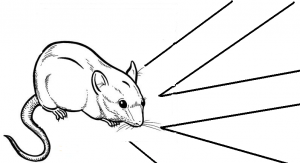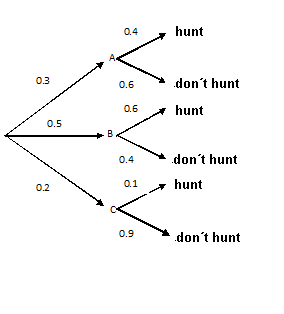Tabla de Contenidos
Total Probability
We have the followings n events  that are:
that are:
- they are incompatible events two by two, ie, they haven´t common elements (
 )
)
- if we join all events from E (colection of samples), is the group that is created by all posible results from a random experience.
That: 
Then, the probability of a event S is happened, I can decompose it, as:
 (Demostration of this result)
(Demostration of this result)
Example
A mouse is persecuted by a hungry cat. The mouse can to choose one of these streets A, B or C, to salve himself.
- The probability that the mouse choose the A street is 0.3
 P(A)=0.3
P(A)=0.3 - The probability that the mouse choose the B street is 0.5
 P(B)=0.5
P(B)=0.5 - The probability that the mouse choose the C street is 0.2
 P(C)=0.2
P(C)=0.2
The probabilities that the mouse is hunted by mouse in every street, are:
- P(cat hunts mouse in A)= P(+|A)= 0.4
- P(cat hunts mouse in B)= P(+|B)= 0.6
- P(cat hunts mouse in C)= P(+|C)= 0.1

What´s the probability that cat hunts mouse?.(Calculate P(+))
SOLUTION
We make a diagram with tree form to this exercise:

 =
= ¡the cat does not have assured the food
!
¡the cat does not have assured the food
!



